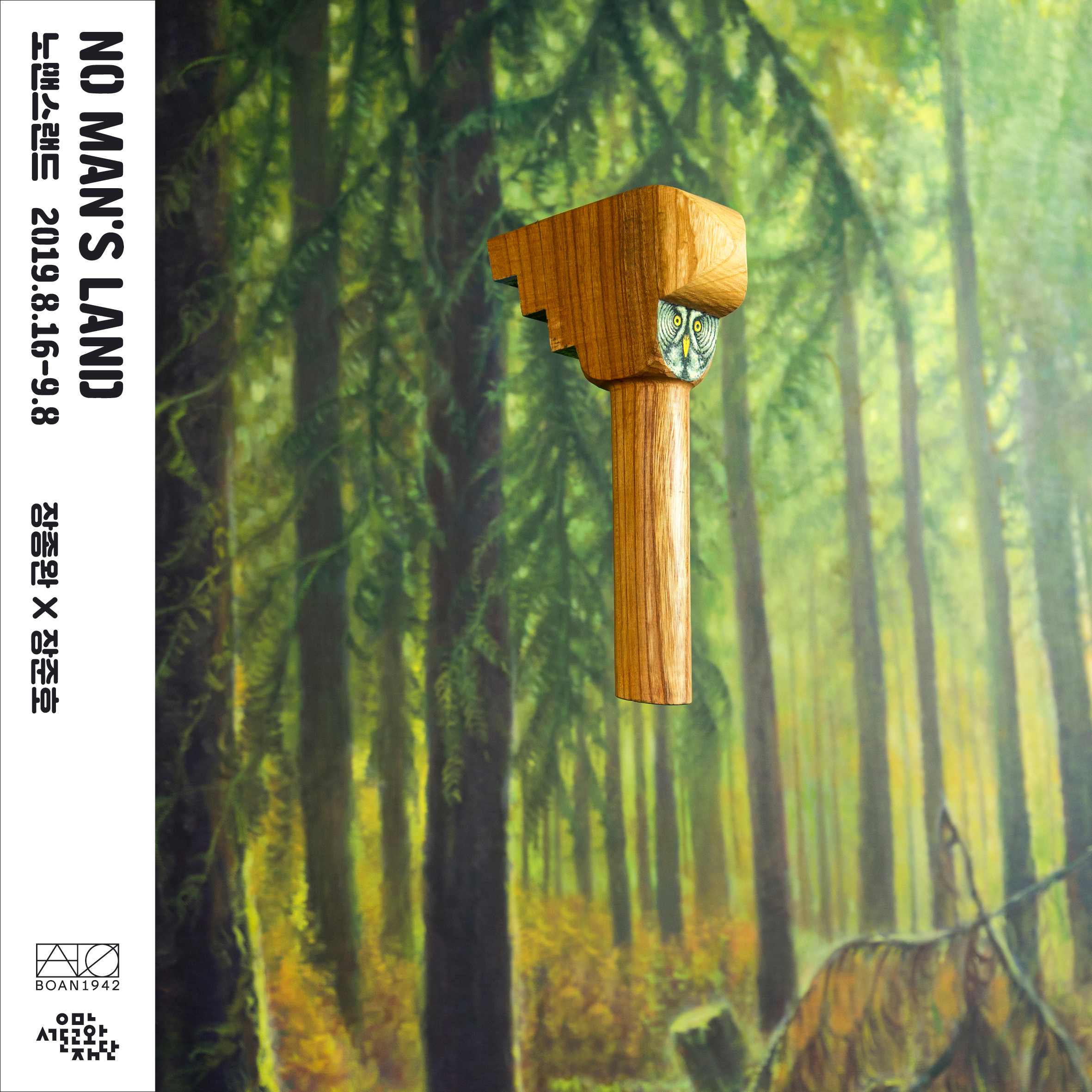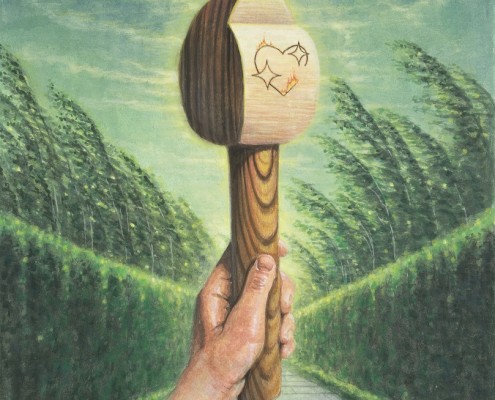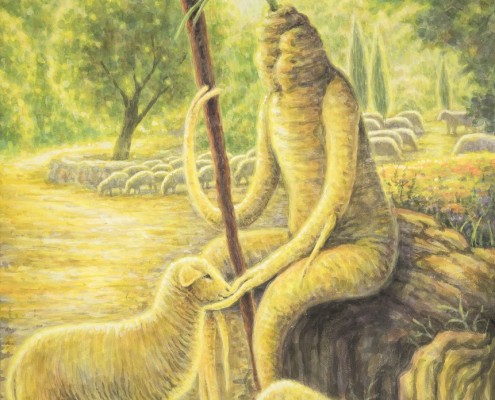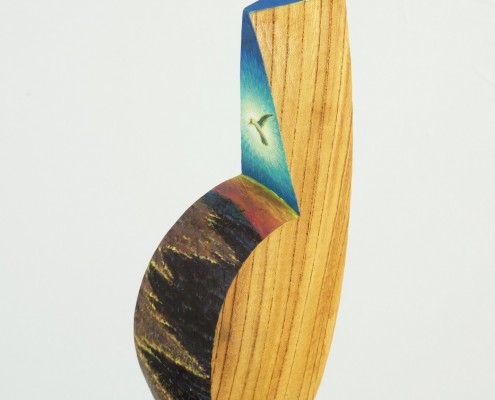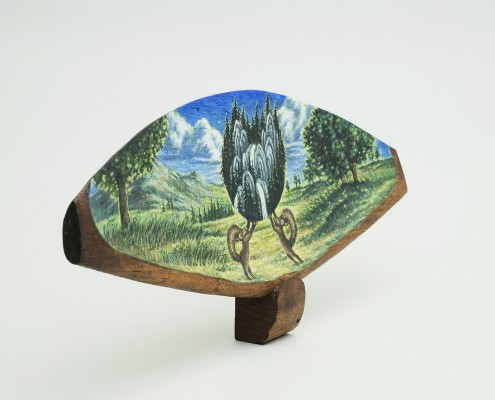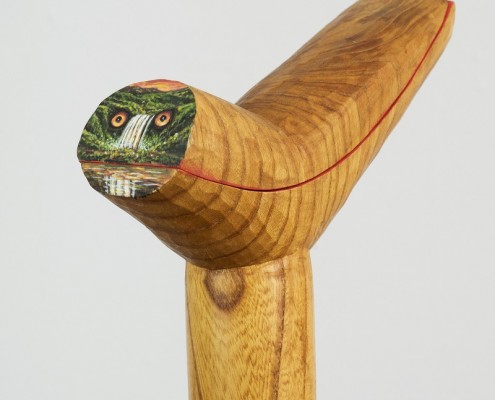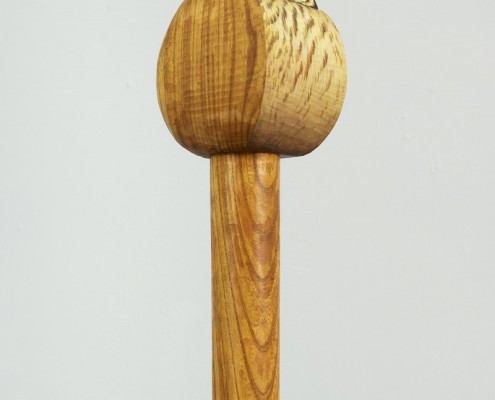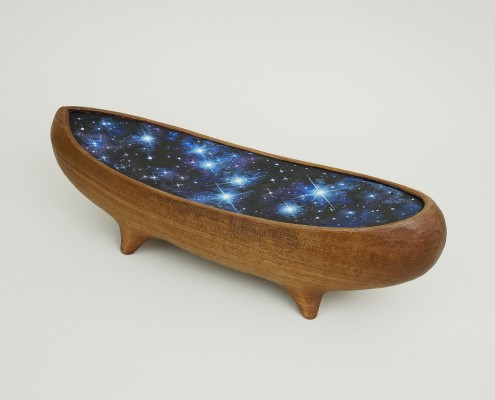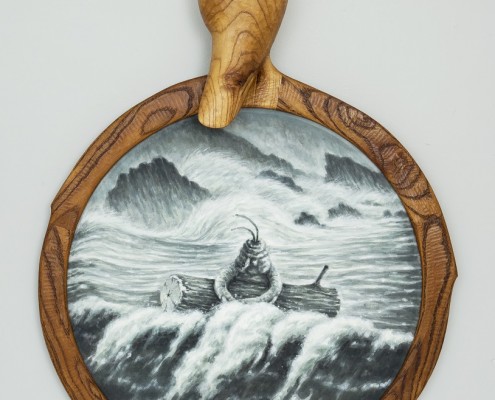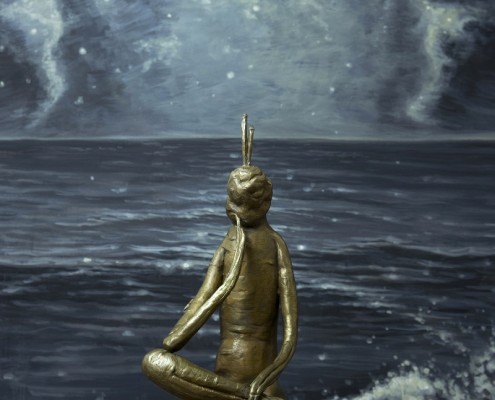노맨스랜드
NO MAN’S LAND
.
2019. 8.16 – 2019. 9. 8
통의동 보안여관, 아트 스페이스 보안2
BOAN1942, ART SPACE BOAN 2
.
장종완, 장준호
기획, 글. 송고은
협력 기획. 박승연
그래픽 디자인. 픽셀 스페이스
번역. 장혜정
.
오프닝.
2019. 8. 16. 금. 오후 6시
아트 스페이스 보안 2
서울시 종로구 효자로 33 통의동 보안여관 신관 지하 1층
화 – 일, 오후 12시 – 오후 6시
Jang Jongwan , Junho Jang
Curated by Goeun Song
Text. Goeun Song
Associate curator. Seungyeon Park
Graphic Design Pixel space
Translation. Hyejung Jang
Opening Reception
2019. 8. 16. FRI. 6PM
ART SPACE BOAN 2
BOAN1942 B1
33 Hyojaro Jongno Seoul
Tue – Sun, 12 pm – 18 pm
www.b1942.com
노맨스랜드
.
글. 송고은(큐레이터)
No Man’s Romance; 생각하는 자연과 움직이는 사물들
통의동 보안여관은 2019년 8월 16일 부터 9월 8일까지 장종완X장준호의 <노맨스랜드(NO MAN’S LAND)>1)를 개최한다. 종말은 여지없이, 또 예견 되었다.진화를 거부한 ‘역사의 종말’2)은 1990년대 다시 선언된다. 이 시기 청소년기를 보낸 두 작가는 한국 사회의 치열한 성공 신화와 수많은 신드롬의 생성과 소멸을 목격하며 묘한 허무함과 좌절감을 경험했다고 말한다. 당시 이들에게 잔류한 감각은 90년대 노스탤지어를 재현시키기보다 <노맨스랜드>라는 새로운 항로를 찾게 하는 방향타가 되었다. 전시는 오늘의 현실과 전혀 다른 차원의 환상적이고 기이한 세계를 상상하게 한다. 다만, 우리의 인식이 이 세계의 단편적 풍경들과 오늘의 현실을 끊임없이 교차시킬 뿐이다.
회화를 위주로 우리 사회의 유토피아적 상상력이 만들어낸 초월적 풍경을 포착해온 장종완과 한국사회가 발명한 ‘전통적’신화와 역사적 이미지를 조각적 방식으로 선보여온 장준호는 이번 전시에서 그림과 조각이 취할 수 있는 가장 밀접한 방식의 협업을 시도했다. 두 작가는 서로의 작품에서 발견한 형태와 이야기를 각자의 매체를 통해 평면과 입체로 재해석하는 한편, 장준호의 조각적 오브제 위에 장종완의 이미지를 덧입히는 연속적이고 상호교환적인 방식을 취했다. 그래서 각 작품은 하나의 완결된 예술작품인 동시에 <노맨스랜드>를 구성하는 언어, 철학, 문학, 종교를 함축하는 기념비적 사물과 역사적 장면이 된다. 전시는 이런 사물과 이미지로 점유된 가상의 공간을 통해 오늘의 현실을 전혀 새로운 차원으로 조망하게 한다.
전시의 출발점이 되는 남겨진 ‘신화’는 이제 어떤 주어 뒤에 놓여도 어색하지 않은 단어 중 하나가 되었다. 롤랑 바르트(Roland Barthes)가『신화론』(1957)에서 언급했듯 오늘날 신화는 ‘전통적인 이야기’ 혹은 ‘신들의 행적을 다루는 이야기’에서 벗어나 현대인들이 무의식적이며 자연스럽게 받아들이고 있는 모든 가치관들을 총괄하는 개념으로 설명된다. 이렇듯 인간의 역사는 근대화를 통해 오랫동안 자연스럽게 인식된 국가적·사회적 신화들을 해체시키고자 했다. 하지만 이 역시 탈신화화라는 새로운 신화를 창조해내고 있는 것은 아닐까?
작품에서 보이는 ‘생각하는 자연’과 ‘움직이는 사물’ 역시 자신들만의 또 다른 신화를 구축하려 하는 듯하다. 우정, 사랑, 희생, 숭배의 감각을 지닌 작품 속 대상들은 인격적이라기보다 오히려 초자연적인 신령에 가깝게 보인다. 그러나 동시에 미래에 펼쳐 질 것이라고 주장되었던 유토피아적 세계관 같은 무지한 아름다움을 드러낸다. 신화화와 탈신화화를 거듭하는 오늘의 시점에서 작품이 예술가가 감각한 기호와 표상의 편집과 조합이라면 전시와 나란히 놓인 단편은 동화적인 상상력을 더욱 자극하며 본질적 질문을 향하게 하는 또 다른 경로를 마련하고 있다. 이제 이들은 거꾸로 우리가 어떤 ‘신화’ 위에 서 있으며, 또 어떤 ‘신화’를 폐기하고자 하는지에 대해 묻고 있는 듯하다. 이는 <노맨스랜드>에 최후의 인간으로 초대된 우리에게 던져진 질문이기도 할 것이다.
- 노 맨스 랜드(NO MAN’S LAND)는 1차 대전 당시 교전중인 적군 사이에 설정된, 아무도 들어갈 수 없는 지역이라는 ‘무인지대’ 란 표현에서 생겨났다. 이후 공포나 불확실함으로 누구에게도 점유되지 않는 땅을 말한다. 여기서는 생각하는 자연과 움직이는 사물이 존재하는 비인간의 공간을 의미하고 있다. 이런 세계관은 에드윈 에벗(Edwin Abbott), 『플랫랜드(Flatland)』(1884)에 영향을 받아 상상 되었다.
- 프랜시스 후쿠야마(Francis Fukuyama),『역사의 종말: 역사의 종점에 선 최후의 인간』(The End of History and the Last Man)(1992). 1989년 동유럽의 붕괴 이후 발표된 이 책은 플라톤, 칸트를 비롯해 헤겔, 마르크스 등이 언급한 역사의 보편적 진화 과정을 기반으로 인간사회의 역사적 진화의 종말에 관해 논했다. 베를린 장벽의 붕괴, 천안문 사태, 이라크의 쿠웨이트 침공을 연이어 겪었던 당대 이 책은 크게 주목받았으며 동시에 자유민주주의 체제에 대한 ‘낙관론’으로 비판받기도 했다.
NO MAN’S LAND
.
NO MAN’S ROMANCE: Thinking Nature and Moving Things
.
Text. Goeun Song (Curator)
Again, the end was foreseen. The ‘End of History,’1)which refused to evolve, was re-declared in 1990. The two artists, who spent their adolescence during this period, said they experienced strange vanity and frustration, witnessing the fierce success “myths” in the Korean society and the creation and destruction of numerous syndromes. The sensation that remained in them became a rudder to find a new route called NO MAN’S LAND2), rather than recreating the nostalgia of the 90s. This exhibition has us to imagine an arcane and bizarre world in a dimension completely different from today’s reality. Nevertheless, our consciousness constantly intervenes the fragmentary landscapes of this imagined world and the reality of today.
Jongwan Jang has captured the transcendental landscape created by the utopian imagination of our society mainly through painting, and Junho Jang has presented traditional myths and historical images invented by the Korean society in a sculptural way. In this exhibition, the two artists attempted the closest collaboration between the media of painting and sculpture. They reinterpreted the forms and stories found in each other’s works into two or three-dimensional works with their respective focused media. They applied Jongwan Jang’s continuous and interchangeable way of overlaying images to Junho Jang’s sculptural objects. Thus, each piece becomes a complete work of art as well as a monumental object or historical scene that implies the language, philosophy, literature, and religion of NO MAN’S LAND. Through the virtual space occupied by these objects and images, the exhibition allows us to view today’s reality in a new dimension.
The “remaining myth”, the starting point of the exhibition, has now become one of the words that can be placed after any subject. As Roland Barthes mentioned in Mythologies (1957), contemporary myths are comprehended as a concept that goes beyond the “traditional story” or “the story of the deeds of the gods” and encompasses all the values that modern people accept unconsciously and naturally. As such, human history has tried to dismantle national and social myths that have long been commonly recognized throughout modernization. But is this effort also creating a new myth of demystification?
The ‘thinking nature’ and ‘moving things’ in their works seem to be trying to build their own myths. The figures/bodies in the works, with a sense of friendship, love, sacrifice, and worship, appear more like supernatural spirits rather than human beings. However, they simultaneously reveal an ignorant beauty, such as the utopian worldview that has been claimed to unfold in the future. If the work is a compilation or combination of symbols and representations sensed by the artists, the short articles alongside the exhibition further stimulate the fairytale imagination and suggest another path towards the essential question. Now they seem to ask back what “myth” we are standing on and what “myth” we want to discard. Also, this may be a question toward ourselves, who are invited as the last human being in NO MAN’S LAND.
- The End of History and the Last Man (1992) by Francis Fukuyama was published after the collapse of Eastern Europe in 1989. It discussed the end of historical evolution in human society, based on the universal evolutionary process of history which was mentioned by Plato, Immanuel Kant, Georg Wilhelm Friedrich Hegel, and Karl Marx. This book received much attention as it was published in the period following the collapse of the Berlin Wall, Tiananmen Massacre, and Iraq’s invasion of Kuwait, but was also criticized for its optimism about the liberal democratic system.
- NO MAN2’S LAND originated from the expression to define an area where no one could enter, caused by the battle between two enemies during World War I. Thus, it means the land that is not occupied by anyone due to fear or uncertainty. In this exhibition, it means the non-human space where the ‘thinking nature’ and ‘moving things’ exist. The imagination of this view of the world was under the influence of Flatland (1884) by Edwin Abbott.

